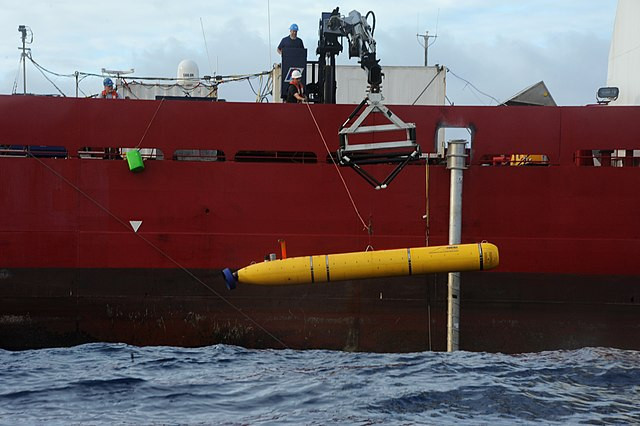Ten years after Malaysia Airlines Flight MH370 vanished without a trace, a British pilot has put forth a startling theory about the plane's fate. Simon Hardy believes that the aircraft's "suicidal" pilot, Captain Zaharie Ahmad Shah, 53, perfectly ditched the plane into the Southern Indian Ocean, entombing it and the 239 passengers aboard at the bottom of the sea in a spot that has never been searched before.
The Boeing 777 aircraft disappeared from radar on March 8, 2014, while en route from Kuala Lumpur to Beijing. Satellite data showed the plane deviated from its flight path, heading over the southern Indian Ocean, where it is believed to have crashed. Fears have persisted that Captain Shah was responsible for deliberately crashing MH370 in a murder-suicide of a shocking scale, possibly due to problems in his personal life, such as an alleged split with his wife and anger over a relative's imprisonment.
Mr. Hardy, a Boeing 777 pilot himself, has proposed a theory of where the plane ended up after calculating the most likely positions of its remains. His work caught the attention of the official search team, and he was invited to join the Australian Transport Safety Bureau and a team of experts in 2015. Despite scrutinizing his theories using high-tech flight simulators, Mr. Hardy's proposed search area was never explored before the search ended in 2017.
According to Mr. Hardy, the 'suicidal' pilot carried out his plan to kill all of the passengers before burying the plane in a deep trench at the bottom of the sea. Clues such as an extra 3,000kg of fuel added to the plane before takeoff and extra, unrequired oxygen supplied only to the cockpit led him to believe his theory.
"It's an incredible coincidence that just before this aircraft disappears forever, one of the last things that was done as the engineer says nil noted [no oxygen added], then someone else gets on onboard and says it's a bit low," Mr. Hardy told The Sun. "Well, it's not really low at all. It's a strange coincidence that the last engineering task that was done before it headed off to oblivion was topping up crew oxygen which is only for the cockpit, not for the cabin crew."
Mr. Hardy believes Captain Shah aimed to down the plane at the Geelvinck Fracture Zone, a trench hundreds of miles long, giving him room for maneuver. This part of the ocean frequently experiences earthquakes, so the jet plane could be buried under tons of rocks at the bottom of the Southern Indian Ocean by now.
The British pilot spent months drawing constant speed lines until he found one that was unique, giving him a "eureka moment." His line showed that if MH370 had taken this exact route, its flight speed would have been 488 knots, the cruising speed of Boeing 777s flown by commercial pilots every day. Working backwards, his proposed flight path comes within half a degree of where the plane made its last turn towards the Southern Indian Ocean.
Mr. Hardy believes the extra fuel and oxygen meant the captain could have flown without detection for around seven hours, leaving passengers and crew to fall unconscious and die as he downed the plane. The discovery of downward-facing flaps, used to reduce stalling speed, suggests a manual override, further supporting his theory.
"If you want the flaps down, there has to be someone there putting the flaps down," he told The Sun. "If the flaps were down, there is a liquid fuel, then someone is moving a lever and it's someone who knows what they are doing. It all points to the same scenario."
Despite debris confirmed or believed to be from MH370 washing up along the African coast and on islands in the Indian Ocean, officials have come no closer to working out what happened to the plane. Mr. Hardy believes that Captain Shah wanted to entomb the plane at the bottom of the ocean without damaging it, but that he did not want to save the passengers.
As the tenth anniversary of the plane's disappearance passes, families of the victims continue to seek answers. Malaysia's Prime Minister Anwar Ibrahim has expressed his inclination to support reopening all investigations into MH370, while a Texas-based marine robotics firm, Ocean Infinity, has offered to conduct a new search using state-of-the-art underwater gear.
Leading aerospace engineer Richard Godfrey told Fox News, "I think it is certainly the greatest mystery of modern aviation." With millions of people flying every day, finding answers to what happened to MH370 could ensure new safety systems to prevent such a tragedy from happening again and provide a sense of closure for those still grieving the loss of their loved ones.






